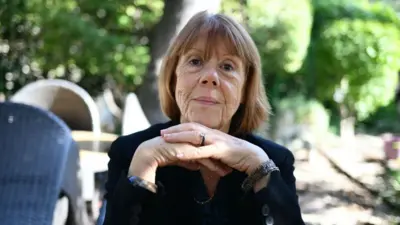We've updated our Privacy and Cookies Policy
We've made some important changes to our Privacy and Cookies Policy and we want you to know what this means for you and your data.
Shankill bomb clergyman says NI Troubles victims used for political gain
- Author, Mervyn Jess
- Role, ┤¾¤¾┤½├¢ Newsline
Victims of Northern Ireland's Troubles have been used for political gain, according to a clergyman who helped people caught up in the Shankill bomb.
Nine Protestant civilians and an IRA bomber were killed in the attack 20 years ago.
It took place on a Saturday afternoon at a fish shop in the heart of one of Belfast's best-known loyalist areas.
Reverend David Clements said in the following years, victims had mostly not been helped by political intervention.
"The subject of support and care for victims is an issue that has hung around the edges of political debate for years," he said.
"It has been misused by people, on both sides, to advance their own political agendas and that has not in most cases been for the benefit of victims themselves."
Mr Clements was also critical of the churches' long-term support of victims in general, beyond "caring for people in the immediate aftermath".
"There was a lot of attention, but then a week later, a month later, a year later, 20 years later, there hasn't been the support and the help that there probably should have been," he said.
"What can be said by way of criticism for the clergy and the churches can be said, plus a bit more, for the rest of society.
"Too many people in Northern Ireland have the notion that we should draw a line under things and get on with it, which is grossly unfair for so many people who have lost, like the families in the Shankill bomb, in Greysteel and in other situations like that."
'Dust and rubble'
Among those killed in the IRA attack were two children age seven and 13.
The mother of 13-year-old Leanne Murray, who died in the bomb, said she was haunted by memories of that day.
Gina Murray said she had been out shopping with her daughter, who had gone by herself into Frizzell's fish shop while she went to another store.
"I told her I'd see her in a couple of minutes, and I was in the shop when I heard the explosion. I just dropped everything and ran," she said.
"When I got outside all I saw was dust and rubble, and I couldn't find her anywhere.
"Somebody came and asked me if I was injured, and I said no but I couldn't find my daughter."
She said they went to a number of hospitals including the Royal and the Mater, but there was no information of her whereabouts.
"Two detectives asked us to follow them, and we ended up at Forster Green Hospital where we were told Leanne was in the mortuary," she said.
"One minute we were shopping, a few hours later I was having to identify her body."
In addition to the 10 deaths, a further 57 people were injured by the bomb.
IRA bombers Thomas Begley and Sean Kelly posed as fishmongers and carried the bomb into Frizzell's fish shop where shoppers were queuing for food.
Begley was killed when the bomb exploded prematurely, while Kelly was pulled from the rubble of the collapsed building.
He received a total of nine life sentences for his role in the murders but was released early in July 2000, under the terms of the Good Friday Agreement.
On Sunday, a memorial ceremony was held for Begley in north Belfast. The bomber's father unveiled a plaque during the commemoration ceremony which was organised by Begley's friends.
Some of Begley's victims criticised the commemoration, saying it had added to their grief.
Top Stories
More to explore
Most read
Content is not available








